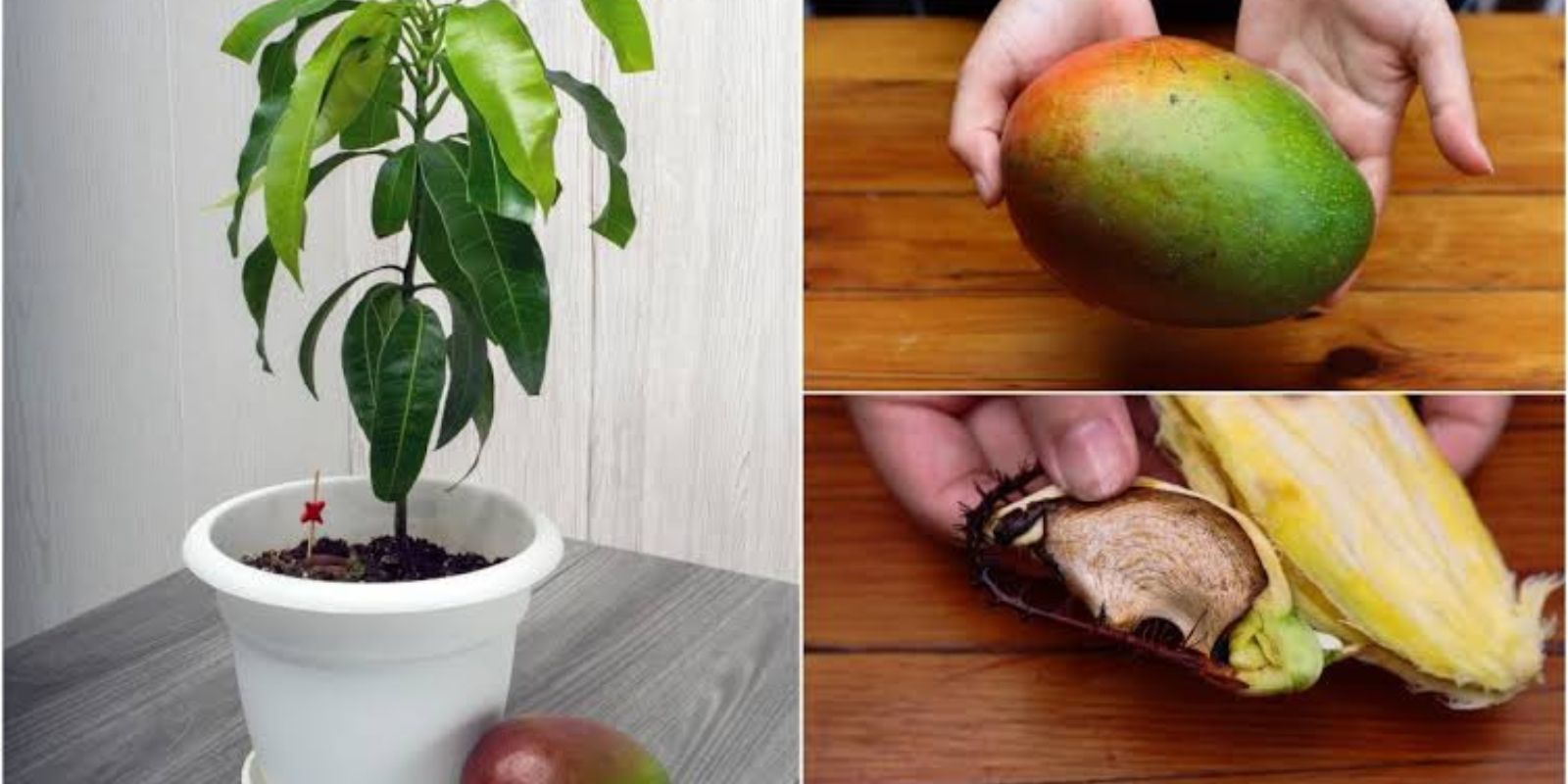Introduction
Growing a mango tree from a seed is a fulfilling experience that connects you to the natural cycle of life while bringing a piece of the tropics to your home. Mangoes, known for their sweet and tangy flavor, are not only delicious but also symbolic of abundance and vitality. While mango trees traditionally thrive in large orchards, you can successfully grow one in a pot, making this tropical gem accessible to anyone, even in small spaces.
This guide will walk you through the process of planting a mango seed and ensuring it grows into a healthy potted mango tree. With a little patience, you can nurture a plant that might one day reward you with homegrown mangoes.
Why Grow Mango Trees in Pots?
Growing a mango tree in a pot has several benefits:
- Space-Saving: Ideal for urban gardens, patios, or balconies.
- Portability: Pots allow you to move your plant to sunny or protected areas as needed.
- Control: You can manage soil quality, watering, and pests more effectively in a contained environment.
- Satisfaction: Watching a tree grow from a seed is a rewarding journey for any plant lover.
Step-by-Step Guide to Growing a Mango Tree from Seed
1. Extracting the Seed
- Choose a ripe mango for its mature seed.
- Carefully remove the husk and clean off any remaining fruit flesh.
- Gently pry open the hard outer shell to reveal the seed inside.
Tip: Handle the seed with care to avoid damaging it during extraction.
2. Preparing the Seed
- Wash the seed thoroughly to remove any pulp, which can attract mold or pests.
- Allow it to dry for about 24 hours in a cool, shaded spot.
3. Soaking the Seed
- Submerge the seed in warm water for 24 hours to soften it and stimulate germination.
- Change the water if it becomes cloudy to prevent bacterial growth.
4. Choosing the Right Pot
- Select a pot that is at least 12 inches deep and wide, with drainage holes to prevent waterlogging.
- Use nutrient-rich, well-draining potting soil. Adding sand or perlite can enhance drainage.
Pro Tip: A ceramic or terracotta pot is ideal, as it allows for better aeration.
5. Planting the Seed
- Plant the seed flat or with the rounded side facing upward. Ensure it’s buried about 1 inch below the soil surface.
- Cover lightly with soil and water gently to settle it.
6. Creating the Ideal Environment
- Cover the pot with clear plastic wrap or place it in a clear plastic bag to create a greenhouse effect.
- Keep the pot in a warm spot with indirect sunlight. Mango seeds germinate best in temperatures of 70–85°F (21–29°C).
7. Watering and Maintenance
- Check the soil regularly to ensure it remains moist but not soggy.
- Remove the plastic cover once the seed sprouts, usually within 2–3 weeks.
Important: Avoid overwatering, as mango seeds are prone to rot in waterlogged soil.
8. Sunlight Requirements
- Place the pot in a sunny spot where the seedling can receive at least 6–8 hours of sunlight daily.
- Rotate the pot occasionally to ensure even growth.
9. Fertilizing for Growth
- Use a balanced liquid fertilizer monthly to provide essential nutrients.
- Organic fertilizers like compost tea or diluted fish emulsion are also excellent choices.
10. Transplanting (Optional)
- As the tree grows, transfer it to a larger pot to accommodate its expanding root system.
- Refresh the soil with organic matter during each transplant.
Common Challenges and How to Overcome Them
- Slow Germination:
- Ensure the seed is from a ripe mango and provide consistent warmth and moisture.
- Yellowing Leaves:
- This may indicate overwatering. Allow the soil to dry out slightly between waterings.
- Pests:
- Monitor for common pests like aphids or spider mites. Use neem oil or insecticidal soap as needed.
- Stunted Growth:
- Check if the pot is too small or if the soil lacks nutrients. Fertilize and repot if necessary.
The Benefits of Growing a Mango Tree
- Tropical Aesthetic:
- Mango trees add a lush, exotic vibe to your home or garden.
- Air Purification:
- Like most plants, mango trees help filter toxins from the air and release oxygen.
- Edible Rewards:
- If cared for properly, your potted mango tree may produce fruit within 5–8 years.
- Sustainable Gardening:
- Growing your mango tree reduces reliance on store-bought fruit, contributing to a more eco-friendly lifestyle.
Caring for Your Mature Mango Tree in a Pot
- Pruning:
- Regularly trim dead branches and leaves to encourage healthy growth.
- Pollination:
- Mango trees are self-pollinating, but you can gently shake the branches during flowering to enhance pollination.
- Seasonal Adjustments:
- Bring the pot indoors during colder months if you live in a region with frost.
- Harvesting:
- If your tree produces fruit, wait until the mangoes are fully ripe before picking them.
Conclusion
Growing a mango tree from seed in a pot is an exciting and rewarding experience. With proper care and patience, you can enjoy the beauty of this tropical plant and even savor its delicious fruit in the future. Whether you’re an experienced gardener or a beginner, this step-by-step guide will help you embark on your mango-growing journey.
💬 Let’s Chat! Have you tried growing a mango tree at home? Share your experiences and tips in the comments below!

